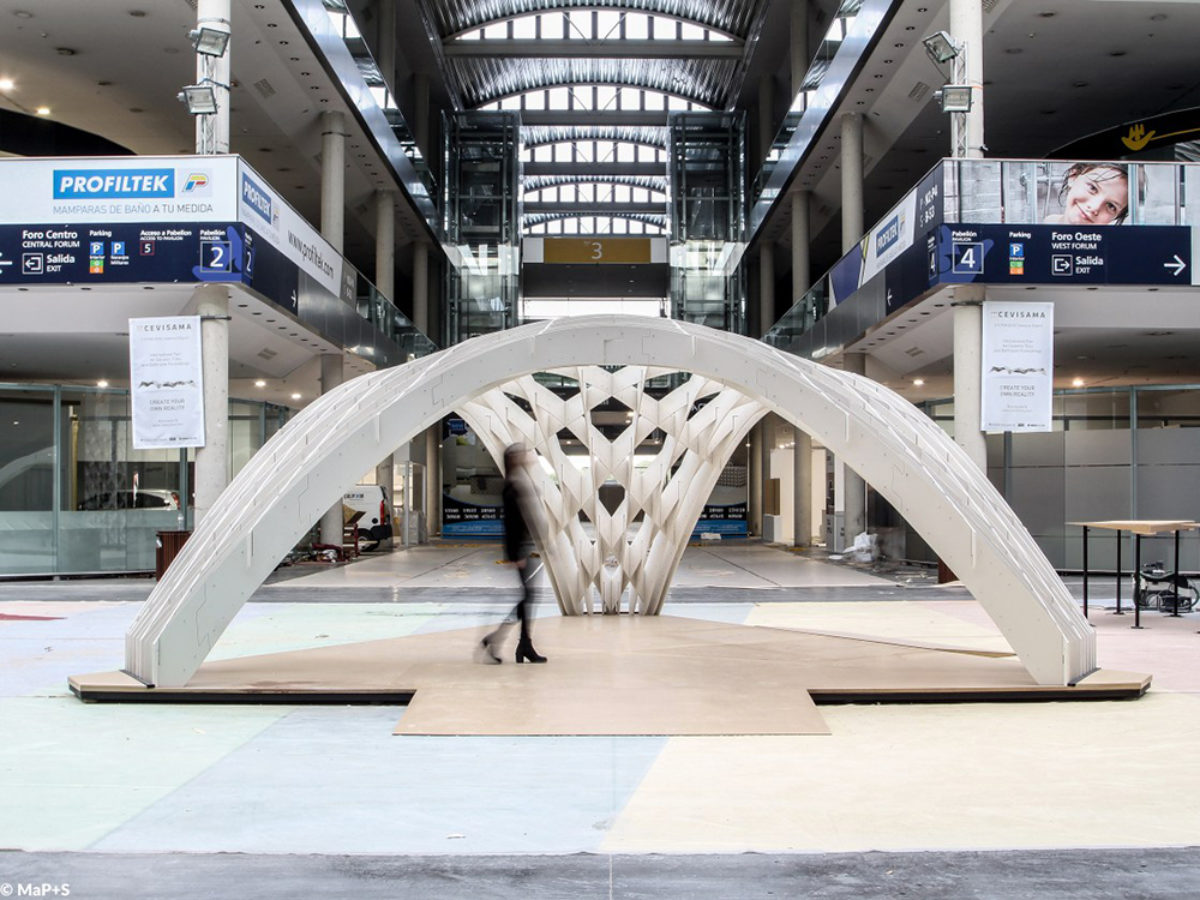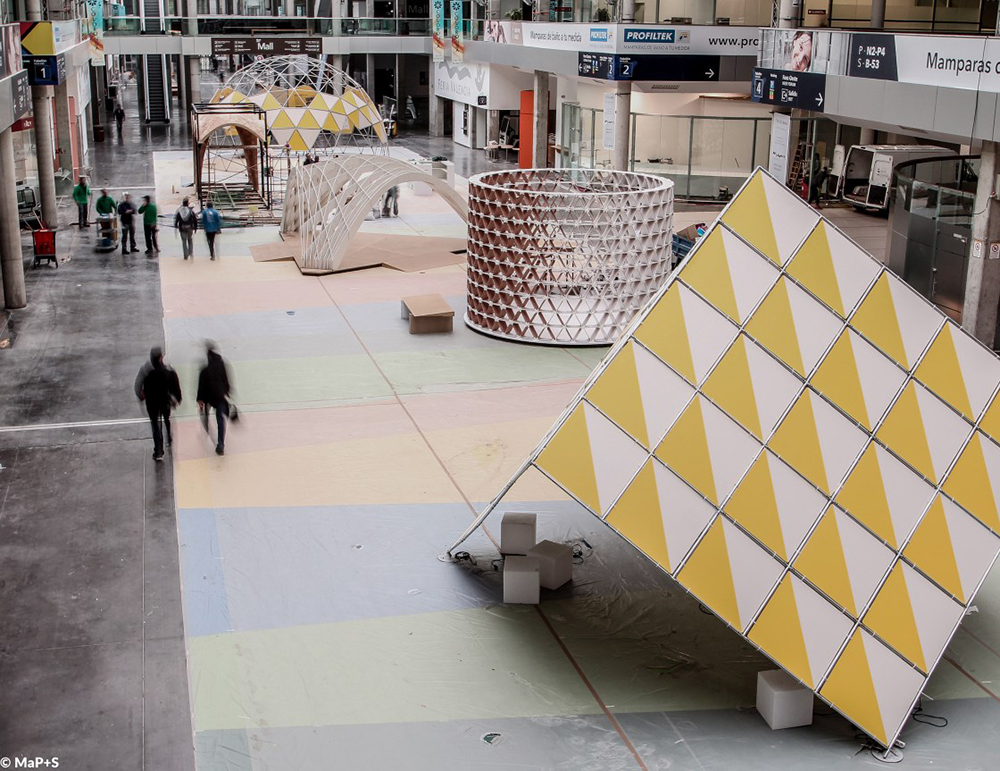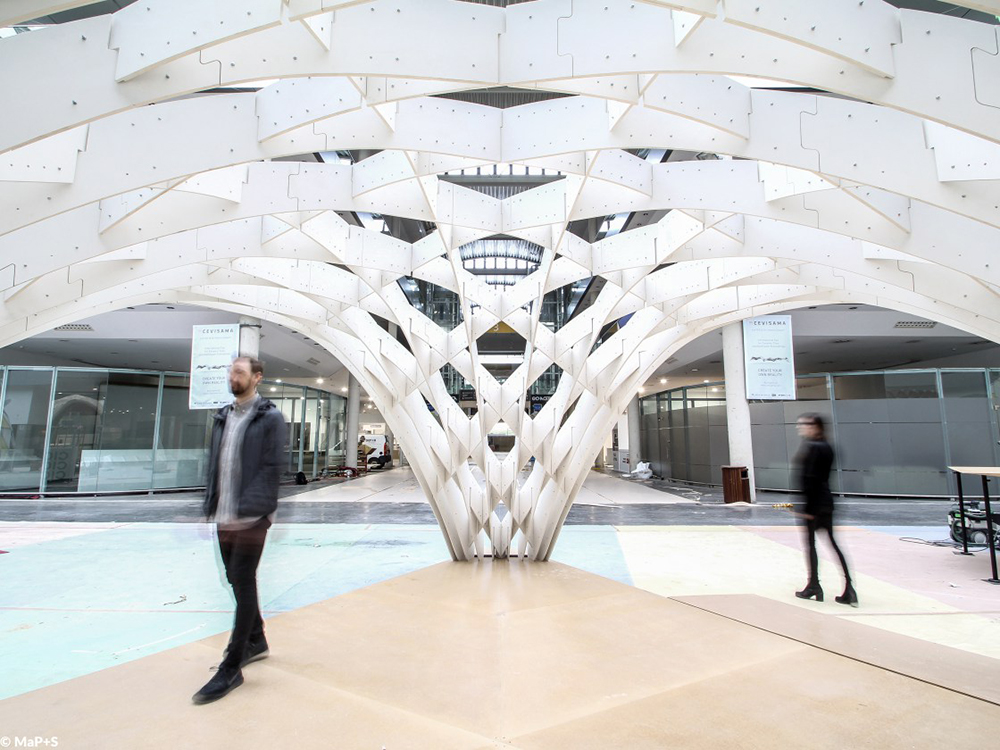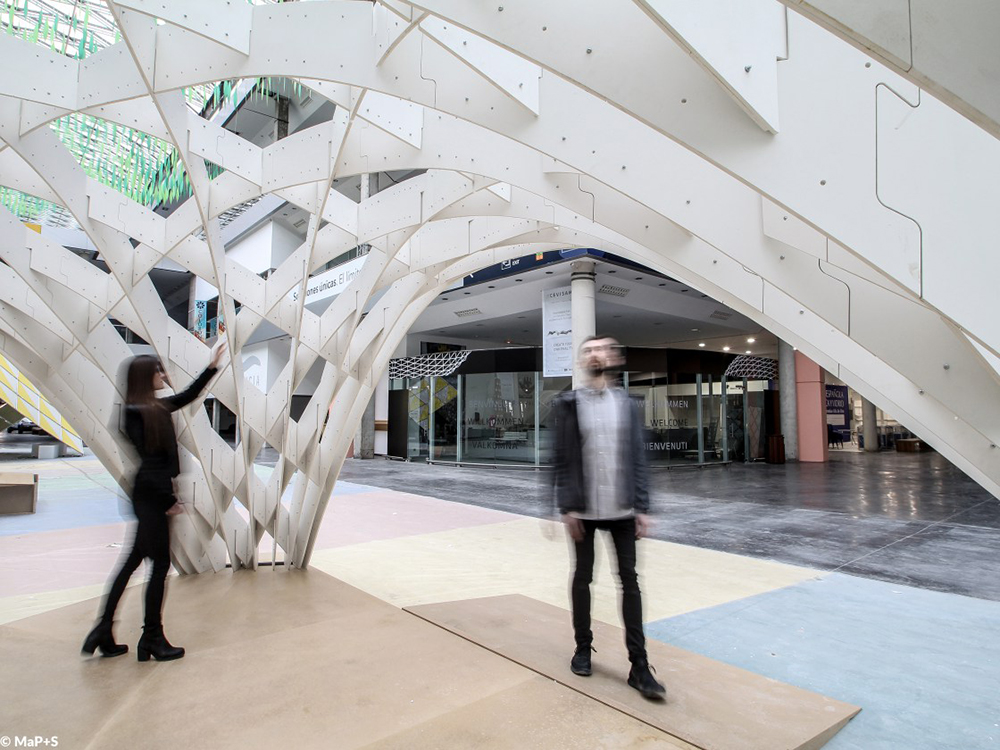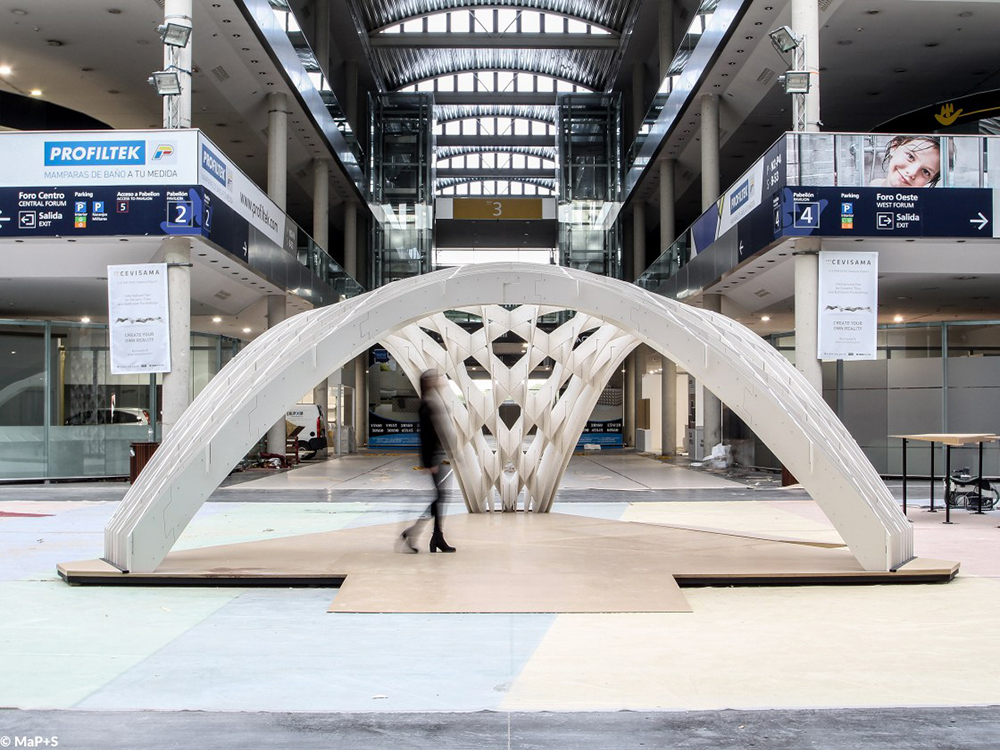The structural limits of ceramic tiles are being put to the test in a new installation by the Harvard Graduate School of Design’s Material Processes + Systems (MaP+S) Group. On view February 5–9 at the international tradeshow Cevisama 2018, “Ceramic Tectonics: Tile Grid Shell” presents a self-supporting, three-dimensional structure made from tile traditionally used as an interior surface finish or exterior cladding. Its novel pattern of triangles and hexagons represents the first system of this kind constructed from ceramics.
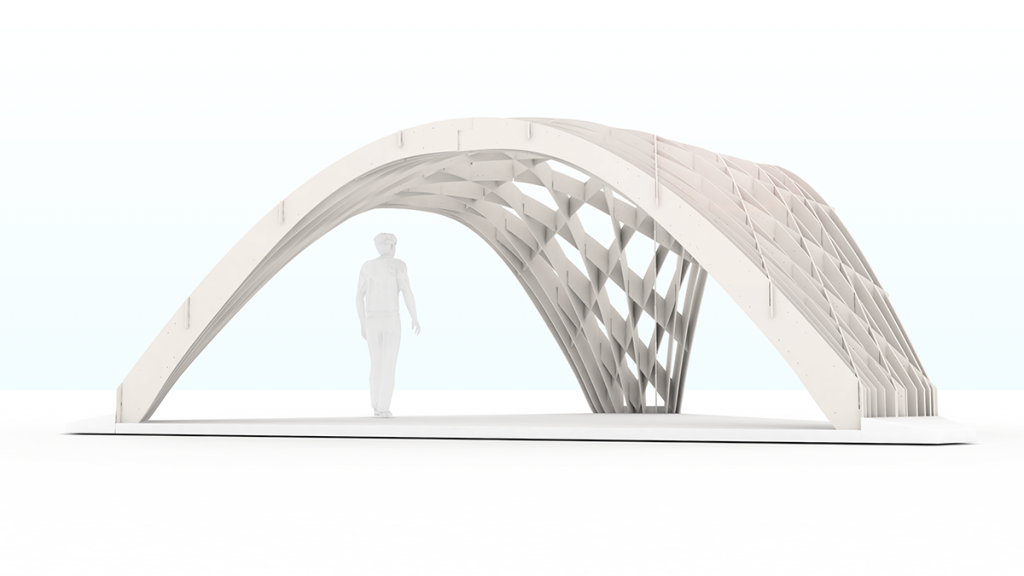
“Ceramic Tectonics” is part of a growing body of research exploring new structural applications for thin, large format ceramic tiles—a product typically experienced as a two-dimensional surface. Its grid form is made from unreinforced 6mm thick ceramic tile and comprises 465 individual elements customized according to their unique position in the structure. The triangular catenary form of the structure works to minimize internal stresses, efficiently spanning between three support points.
The project team includes MaP+S director Martin Bechthold (DDes ’01), Kumagai Professor of Architectural Technology and director of the Doctor of Design program; Zach Seibold (MDes ’15) (Project Manager); and Yonghwan Kim (MDes ’19), Olga Mesa (MDes ’15), and Milena Stavric (Design Research).
This is not the first time the MaP+S Group has presented its work at the Cevisama fair, which is held each year in Valencia, Spain. Recent installations include last year’s “Ceramic Morphologies” and the 2016 project “Extruded Tesselation: Ceramic Tectonics.”
Learn more about “Ceramic Tectonics: Tile Grid Shell” on the MaP+S Group website.
Images courtesy of MaP+S.
